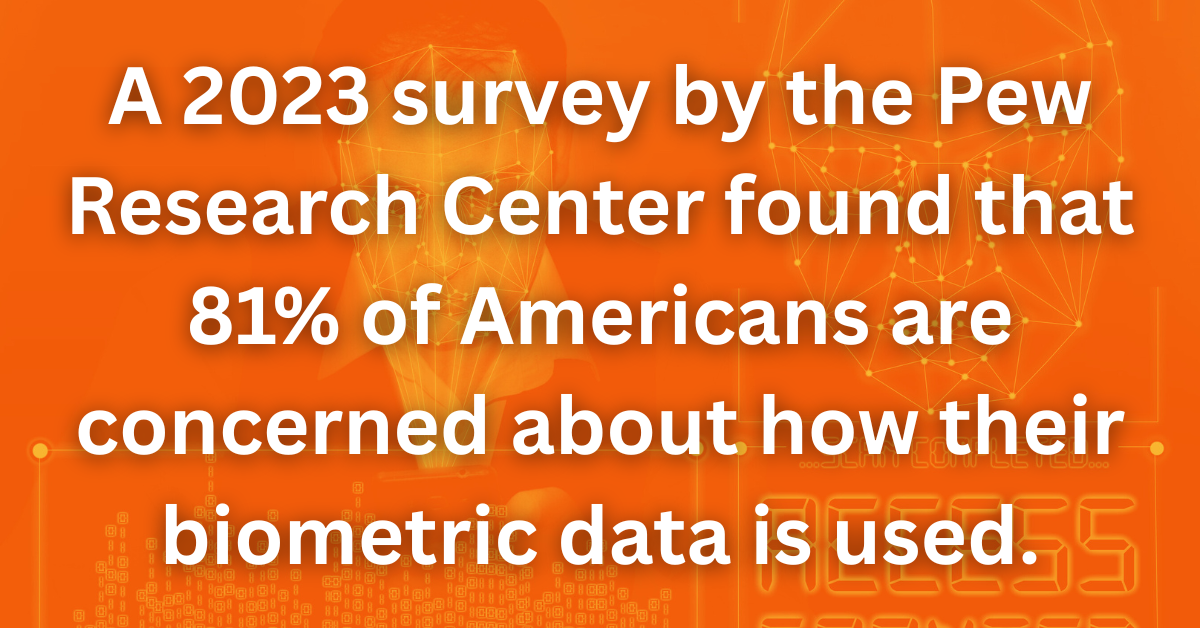Categories
In an era where technology shapes how we interact, customer engagement is vital for building trust and satisfaction in public use settings like transportation hubs, event venues, or community services. Biometric technologies—such as fingerprint, facial, or palm vein recognition—offer innovative tools to enhance these interactions by streamlining access, personalizing services, and ensuring security.
Whether used for ticketing at a stadium, identity verification at a border, or member check-ins at a library, biometrics can redefine how organizations connect with individuals.

Biometrics hold great promise, yet significant resistance can impede customer engagement across public settings. This section breaks down the key factors driving this hesitancy, offering insight into the challenges organizations must address.
A primary barrier is privacy concerns, where individuals fear how their unique biological data—such as facial features or vein patterns—is collected, stored, and potentially misused by organizations or hacked. This anxiety is heightened in public spaces, where the scale of data handling feels overwhelming, necessitating robust safeguards to rebuild trust.
Ethical debates further complicate adoption, centering on issues of consent and the risk of creating surveillance states. In public environments, people often feel monitored without explicit agreement, raising questions about autonomy and the moral implications of widespread biometric use, which must be carefully navigated.
Practical hesitancy stems from usability challenges, including inaccurate scans caused by environmental factors like poor lighting or dirty hands, or physical limitations such as worn fingerprints among manual workers. These frustrations can deter users, highlighting the need for reliable technology and user-friendly design.

Cultural attitudes add another layer of resistance, with some communities viewing biometrics as intrusive or linking them to dystopian narratives from media. These perceptions vary widely, requiring culturally sensitive approaches to ease acceptance and align with diverse societal values.
A lack of education about data security measures—such as encryption or tokenization—fuels skepticism, leaving individuals unsure of how their data is protected. This knowledge gap underscores the importance of transparent communication and education to foster willingness to engage with biometric systems.
The integration of biometrics offers transformative benefits that can enhance customer engagement across public use settings. This section outlines the key advantages, demonstrating their potential to reshape interactions and operational success.
Biometrics provide heightened security by using unique identifiers that are nearly impossible to replicate, significantly reducing fraud in areas like ticket sales or at airport check-ins. This reliability strengthens trust, making biometrics a critical tool for secure public interactions.
Efficiency gains are a major benefit, as biometrics automate processes such as fast-tracking passengers through security checks or enabling quick member entry into fitness centers. By cutting wait times, these systems boost satisfaction and streamline operations in high-traffic environments.
Personalization becomes achievable, allowing systems to recognize returning users and offer tailored services—such as suggesting preferred travel routes at train stations or recalling library preferences. This customization fosters a sense of individual attention, deepening customer engagement.
Biometrics enhance hygiene in shared public spaces, particularly through contactless check-ins during health crises, appealing to safety-conscious individuals. This advantage supports public health goals, making biometrics a practical choice for hygiene-sensitive settings.
Streamlining processes with biometrics can significantly elevate customer engagement by reducing friction and enhancing convenience in public settings. By replacing manual ID checks with biometric scans, organizations can minimize queues and errors, creating a smoother experience.
Use biometrics in high-traffic areas to create express lanes for pre-registered passengers, reducing wait times and improving flow.
Use biometric scanners at event venues to replace paper tickets, allowing quick entry and reducing staff workload.
Pair palm vein recognition with a mobile app for library check-outs, enabling users to borrow items seamlessly from any terminal.
Note: To execute, conduct site assessments to optimize device placement, test under peak conditions, and provide clear signage to guide users, ensuring a frictionless process that encourages repeat engagement.
Personalization through biometrics allows organizations to tailor interactions, fostering a deeper sense of connection and enhancing customer engagement. By recognizing individuals, systems can deliver customized services that resonate on a personal level.
Use facial recognition to identify frequent visitors at a museum, displaying personalized exhibit suggestions on digital screens.
Implement palm vein systems at community centers to retrieve stored preferences (e.g., activity schedules), enhancing user experience.
Integrate multimodal biometrics (fingerprint and facial) with a transit system to adjust fare options based on travel history.
Note: To achieve this, integrate biometric data with backend systems, ensure robust data privacy protocols, and train staff to leverage insights, creating memorable and engaging customer interactions.
Establishing trust is foundational to customer engagement, particularly with biometrics, which requires overcoming privacy concerns in public settings. Transparency about data handling can alleviate fears and encourage participation.
Display clear notices at entry points explaining encryption and data deletion policies, reassuring users at airports or stadiums.
Host sessions in community centers to demonstrate how biometric data is secured, addressing misconceptions and building confidence.
Partner with independent firms to audit biometric systems annually, sharing results publicly to validate security in transportation hubs.
Note: To implement, develop accessible communication channels (e.g., websites, signage), conduct regular audits, and involve stakeholders in policy design, fostering trust that enhances engagement.
Incentives can motivate individuals to adopt biometrics, overcoming initial reluctance and boosting customer engagement across public use scenarios. Rewards create a positive association with the technology.
Offer points for biometric check-ins at event venues, redeemable for discounts on future tickets or merchandise.
Provide a complimentary transit pass upgrade for users who register with facial recognition at bus terminals.
Grant priority access to popular library resources for members using fingerprint scanners, encouraging widespread use.
Note: To execute, design a scalable rewards program, promote it through multi-channel campaigns (e.g., social media, on-site announcements), and evaluate uptake to refine incentives, driving sustained customer interaction.
Continuous feedback allows organizations to adapt biometric systems, ensuring long-term customer engagement by addressing user needs and concerns. This iterative approach keeps services aligned with expectations.
Deploy QR codes at public venues for users to rate their biometric experience, targeting insights on ease and speed.
Organize monthly discussions with transit users to gather detailed feedback on palm vein check-ins, identifying pain points.
Use app-based feedback tools in community centers to track satisfaction with fingerprint access, enabling data-driven adjustments.
Note: To implement, establish automated collection methods, analyze data quarterly with cross-functional teams, and act on findings (e.g., adjusting scanner height), ensuring the system evolves with customer preferences.
Biometric technologies hold immense potential to elevate customer engagement across public use settings by streamlining processes, personalizing experiences, building trust, incentivizing participation, and refining interactions through feedback. The hesitancy surrounding biometrics can be addressed with education and transparency, while their benefits—security, efficiency, and personalization—can drive adoption when leveraged strategically. By implementing these five in-depth strategies, organizations can create engaging, secure, and user-friendly environments. As biometrics evolve in 2025, these approaches will position you as a leader in fostering meaningful customer engagement, enhancing both operational success and public trust.